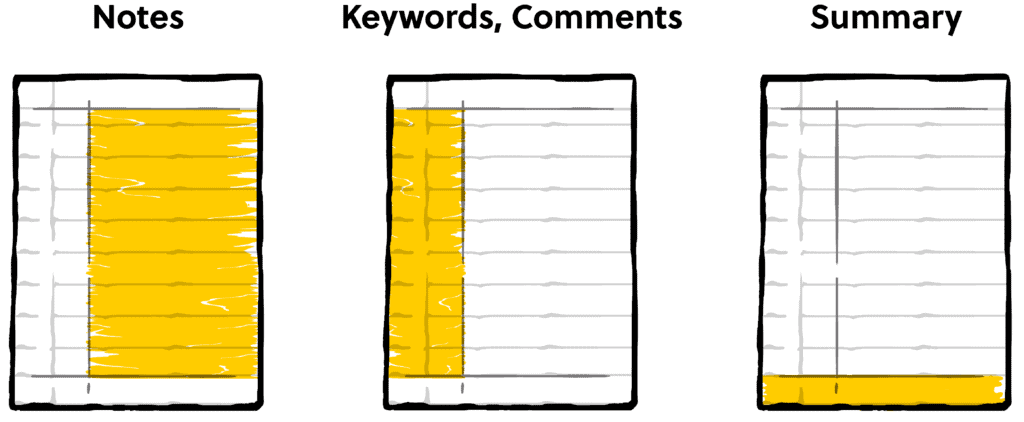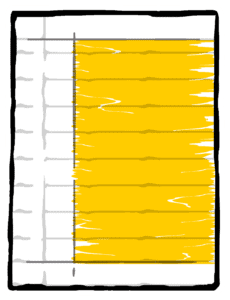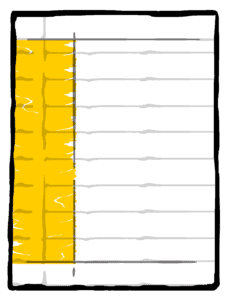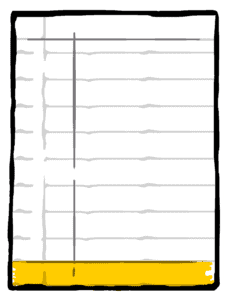Has anyone figured out the best way to take notes in class?
Do you copy what’s on the PowerPoint? Do you write down your own thoughts?
Do you wait until your instructor says “this is important”?
Maybe you successfully jotted down your notes, but then had a hard time deciphering your scribbles the next day.
Being able to study and remember what you’ve learned is a vital part of your learning and test-taking success, so knowing how to take notes effectively is a skill you need to master.
So how do you actually make taking and reading your notes easier? Let’s go over the Cornell note-taking system.
What are Cornell Notes?
Walter Pauk, a professor at Cornell University, developed a system of note-taking to help his students retain more of the information he presented in class. His system of note-taking turns your notes into a customized study guide that’s both easy to use and effective.
How Do You Take Cornell Notes?
First things first, you’ll need a piece of paper and a pencil. At the top of the page, you should write:
• Your name
• The title of the course or class the notes are about
• The date
• The topic the notes cover
Do this on every page, each day when you begin. This allows you to quickly glance at the heading you have created at the top of the page and know exactly what the notes were about and when you took them.
You should then divide your paper into three sections:

The left column should be about 2.5 inches wide, and the bottom section should be about 2 inches tall. This leaves you with a column about six inches on the right side of the page.
Notes Area

This area of the page is where you jot down important information during class. You should use short sentences, lists, key words, and abbreviations in lieu of writing long sentences or paragraphs.
Cue Column

The left column is called the Cue Column. This is where you will jot down key ideas, questions, and any pertinent diagrams or graphs. This column should be filled in after class as you review your notes. Later, you can cover the note and summary portion with a sheet of paper and use the questions you have written here to help you study and remember the material.
Summary

The bottom row is called the Summary Section. This is where you summarize your notes into a few brief sentences after you have reviewed your notes. When you are looking through all of your notes at a later date, you should be able to look only at this review section to grasp all of the important information.
Tips for Note-Taking Success

What Information Do I Write?
Knowing how to structure your notes is important, but it may be challenging to know what or how much information to write down.
Here’s what you should watch for in class to know when to add to your notes:
• Your instructor has something written on the board
• Your instructor stresses a point, repeats a point, or says “remember this”
• Your textbook highlights definitions of key terms
• A specific topic or concept requires more research for you to fully understand it
Essentially, you’ll want to get all of the key information but do not write any more than you have to.
The Five Key Factors in the Cornell Method
To make the most of this note-taking method, it’s essential to remember these five key factors: record, reduce, recite, reflect, and review. Here’s a closer look at each of these factors and how they can help you take effective notes.
1. Record
The first key factor is to record the information you’re learning. This means writing down the main points, key concepts, and other important information presented in class. The goal is not to record everything word-for-word but to jot down the most important bits and pieces. Feel free to use abbreviations and symbols to make your notes more efficient and easy to read, but make sure they are symbols you will remember the meaning of later on.
2. Reduce
The second key factor is to reduce your notes by summarizing and condensing the information. To do this, you should identify the main ideas and eliminate any unnecessary details. Use the left-hand column to write down any pertinent questions or key concepts. This will help you stay organized and make it easier to review your notes later on.
3. Recite
The third key factor is to recite the information you’ve recorded and reduced. This means testing your knowledge and understanding by summarizing the material in your own words. This is where the bottom of the paper comes into play. Once your points are summarized, try to answer any questions or explain the key points out loud. This will help you reinforce your understanding of the material and identify any gaps in your knowledge.
4. Reflect
The fourth key factor is to reflect on the information you’ve learned. This means thinking critically about your notes and seeing if there are further questions you could ask, or if there is additional information you feel you need to add to the notes. You could also ask yourself questions like “What did I learn from this material?” and “How does this information relate to other topics I’ve studied?”
5. Review
The final step is to review your notes on a regular basis. You shouldn’t wait until the night before an exam to start looking over your notes from class. Use the summaries in the left-hand column and bottom row to jog your memory about the key points, and use the right-hand column to review your reflections and observations.
More Cornell Note Resources
Resource: Printable Cornell Note Templates
Templates for taking Cornell Notes with several different styles you can print out.
Tool: GoodNotes
A powerful note-taking app for your computer, phone, or tablet that has Cornell templates available for it.
Video: Using Cornell Notes
A more visual way of learning about Cornell Notes.
You now have a powerful tool for improving your retention of information and enhancing your overall learning experience, so go take some notes!

